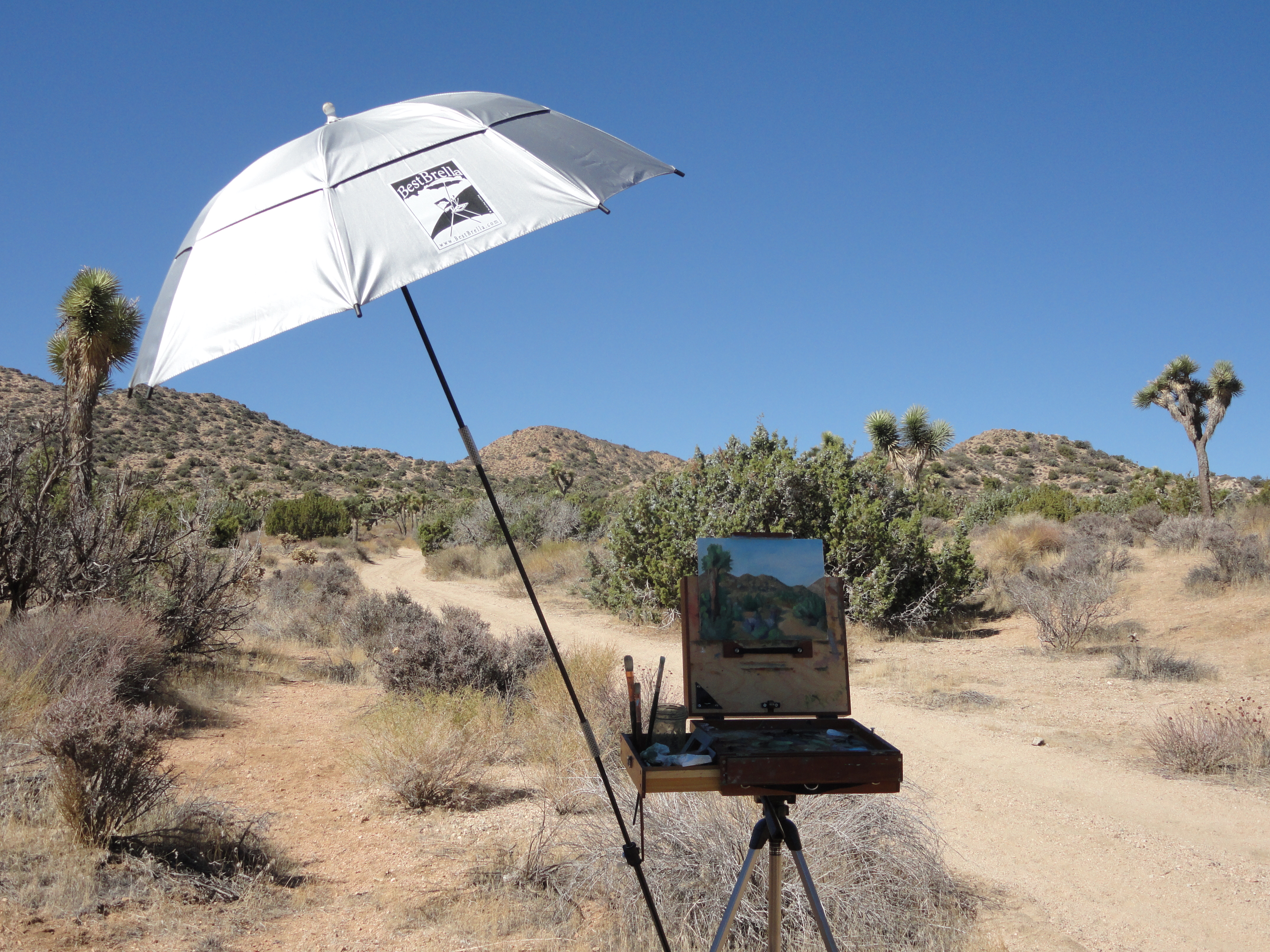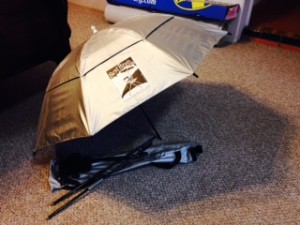Do you want to take your art to a new level? Do you want to have a stronger connection to what you are painting? Do you want to follow in the footsteps of some of the greatest artists ever to put brush to canvas? Maybe you just want to have a lot of fun while painting (more than usual)? Then you need to try painting in the open air, or plein air painting.
Super! So you’ve decided to take the plunge. But what will it take to venture out from the safety and convenience of your studio? Well, that depends on what medium you want to use. If you just want to do some sketching, all you need is a sketch book and pencils, pens, charcoal – whatever you want to use. There are also small watercolor sets that you can get that are super portable. That might be a good way to get your feet wet. But if you are like me, and watercolors are not your medium of choice, and you want to paint in oils or acrylics, then you will need to take more things with you. (I am not a pastel artist, so I can’t give advice on that medium, but I would think that a lot of the following materials would be needed to use pastels as well.) The following lists the equipment that I take with me when I go out plein air painting. When possible, I have included websites for some of the items.
- Pochade Box: Pochade boxes hold your paints, brushes and panels (wet and dry). They also are your pallet, and they support panels while you paint. There are lots of different types, but mine is the “Bitterroot” model from Alla Prima http://alla-prima-pochade.myshopify.com/ They offer several different sized boxes from 6X8 to 11X12. Their products are not cheap, but you really get what you pay for. I absolutely love mine! They are handmade here in America.
- Tripod: You will need something to hold your pochade box while you paint. My pochade box attaches to my tripod. It’s just a standard camera tripod, and the pochade box has a place to attach standard tripods.
There are lots of choices out there for tripods/easels/paint boxes. Some people like the “Julien” style easel/paintbox combination. I had one, but they are pretty heavy and I like to be able to go away from my car, so it just didn’t work for me. There are also “Soltek” easels that look very nice. They are a box and easel in one, and are very light, but I’ve been so happy with my box that I didn’t see any reason to change. The above just happens to be what I use, but you might want to do some research and see what works best for you.
- Paints: I don’t take a lot of different colors with me. Usually, I have: white, alizeron crimson, cad. red light, ultramarine blue, thalo blue, cad. yellow, permanent green light, burnt sienna, and yellow ochre. I like to use the water miscible oil paints. They are less toxic, don’t need turpentine or mineral spirits (you can just rinse your brushes in water), and dry a little faster than oils. They are still oil paints, but have somehow been produced to work with water. I see no difference in the end results between traditional oils and these – and they behave the same way as traditional oils when you are working with them. I have only used “Grumbacher Max”, but most of the “big” oil paint companies have their own version.
- Medium: I use turpenoid natural, which is non-toxic and not flammable. I mix some turpenoid natural with water miscible linseed oil as my medium. My pochade box came with a little jar for medium that fits in the drawers.
- Brushes and Pallet Knives: I usually bring a #6 and a #4 flat or filbert bristle brush. I used to bring more, but I found I didn’t tend to use the other ones, so why bother? I also bring some pallet knives for mixing paint and cleaning my pallet. I don’t usually paint with them, but for some artists, that is all they use. These all fit conveniently in my box.
- Panels: I like to paint on canvas boards. For oil paints, I really like “Centurion OP DLX”. They are already primed and ready to go. I get them through http://www.jerrysartarama.com/discount-art-supplies/canvas-and-boards/canvas-panels-and-boards/centurion-deluxe-oil-primed-linen-panels.htm I generally use sizes from 6X8 – 9X12 (the biggest my pochade box will hold). They are reasonably priced and do not warp (at least I haven’t experienced them warping).When painting plein air, your time is limited because the light changes pretty quickly, so you don’t want to work too big.
- Umbrella: I use the “Best Brella”. It attaches to my tripod and is super useful so you don’t have to find shade to paint in. http://www.bestbrella.com You don’t want your painting or pallet in the direct sun because it makes it a lot harder to judge colors correctly. It’s also a necessity if you paint anywhere that is really hot with little shade. I live and paint in the Mojave Desert of Southern California and would not think of going out without my umbrella. I am able to paint scenes that I wouldn’t consider without my umbrella because there would be no shade and the heat would be unbearable.
- Latex gloves I don’t like oil paint all over my hands, and I’m really a messy painter! You should always use gloves –inside or out – if you paint with oil paints. The solvents and chemicals in them can be very dangerous. The water miscible paints are not as bad, but better safe than sorry I’d say.
- View Finder: A view finder is a wonderful tool to use when composing a visual image for art. If you are accustomed to painting from photographs, a view finder will make the transition much easier. It can be very overwhelming when you get out into “the real world”, and a view finder helps to limit your field of vision. If you have never used one, I strongly suggest you give it a try!
- Sketch book, pens/pencils/charcoal: It’s so important to do some thumbnail sketches to work out values and composition. It’s a step I used to omit, but since I’ve forced myself to do them, I am much happier with my final results.
- Chair/Stool: I don’t have one that I bring because I like to stand when I paint, but some artists might find it convenient. I have seen very small, compact stools that I have been tempted to buy, but so far have held back.
In addition to the above items, you should always have paper towels, comfortable shoes, drinking water, a hat, layers of clothing, sunscreen, snacks, your phone and a camera.
Because I don’t always want to paint right by my car, I pack all this stuff in a back packing backpack. I just have to sling it on my back and I have my portable studio with me where ever I go!
If you enjoyed this post, I invite you to subscribe to my blog and share it with your friends. If you have supplies that you love when you are out plein air painting, please share them in the comments so others (myself included) can learn from you! If you have been inspired to try plein air painting because of this post, I hope you will come back and let me know how your experience went.
Next weekend, Jan. 17th 2015, the High Desert Plein Air Artists will be having our first paint out of the New Year. If you are interested in finding out more about our group, please contact me.
[contact-form][contact-field label=’Name’ type=’name’ required=’1’/][contact-field label=’Email’ type=’email’ required=’1’/][contact-field label=’Website’ type=’url’/][contact-field label=’Comment’ type=’textarea’ required=’1’/][/contact-form]









